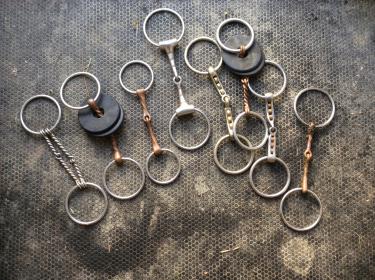[QUOTE=Rel6;8337981]
I think its funny that someone would automatically look at a loose ring and assume it meant the horse was simple or uncomplicated when there could be a double twisted wire in the mouth piece! And from further away where a judge is sitting it would make sense because you’re not going to be able to see the details on the the side of their mouth.[/QUOTE]
Because the market for loose rings today is mostly dressage horses, you’d have to look long and hard to find one with a twist, and to get one that looked like a loose ring but was double twisted wire, you’d probably have to have it custom made. So, in this case, it’s not a terrible assumption.
(That said, it’s not a good way to judge, because you can’t know that about every bit in the class. Best to just let the performance speak for itself and not worry about what legal bit was chosen.)
Fun fact. When I was a kid, everyone who was anyone showed their hunters in a full cheek snaffle. That was the bit that made the best picture… it had taken over from the eggbutt snaffles that everyone used in the 60’s.
And then. There was a Jumping Clinic column in Practical Horseman, written by GM, and he mentioned how happy he was to see a horse jumping in a nice plain uncomplicated D-ring snaffle. At the time, you see, they were racing bits, and they only came in plain mouthpieces, rubber, or with those copper rollers, and the copper roller had a little different D shape, so you could easily tell which was which. He probably thought nothing of it, was just trying to fill a little space and say something nice. 
Well. Within a couple of years, you could buy any mouthpiece you wanted with D ring sides, up to twisted wire, and they all looked alike from the side. The D ring changed to be a little more flattering shape, too, from the original racing D. And EVERYONE who was anyone was using a D-ring, as the new “traditional and only” bit choice.
:lol: :lol: :lol: :lol: :lol: :lol: :lol: :lol: :lol: :lol:


 not meaning to step on any toes nor try to start an argument. This is strictly my opinion. Not fact. I appreciate everyone’s opinion on the matter. Can’t learn and grow without hearing all sides :))
not meaning to step on any toes nor try to start an argument. This is strictly my opinion. Not fact. I appreciate everyone’s opinion on the matter. Can’t learn and grow without hearing all sides :))
